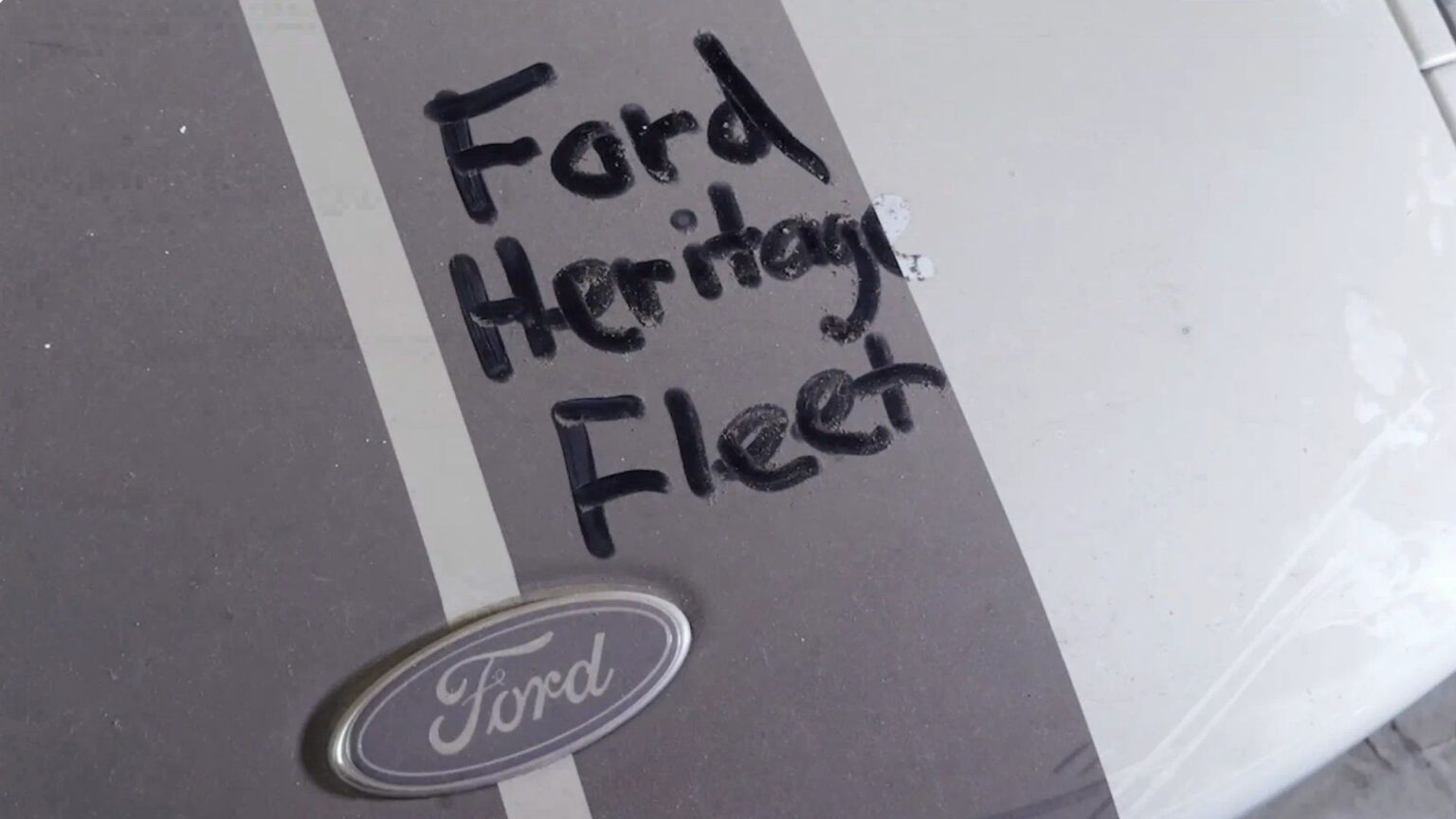This may come as somewhat of a surprise, Ford Motor Company North America has only recently started preserving its greatest automotive hits in a dedicated Heritage Fleet. Unlike GM and Stellantis—both of which have long maintained their own collections—Ford had never kept a central archive of its most iconic machines until recently. Meanwhile, Ford UK, Ford of Germany, and Ford of Australia have been carefully curating their own histories, amassing a combined 500 vehicles. In fact, inspired by a visit to the British collection, CEO Jim Farley returned to the U.S. with the goal of assembling an American fleet that honors Ford’s legacy. Farley tapped skilled archivist Edward “Ted” Ryan, a former Coca-Cola archivist, to head up the project.
Ford Heritage Fleet
“We didn’t do it just to keep old cars and have a museum,” Ryan said. “The intent is to have a viable fleet that can be used by all different teams within Ford.” Thus was born the Ford Heritage Fleet—a screaming showcase of 49 cars, divided into four categories: 24 Ford Performance vehicles, 15 concept cars, six archive collection vehicles, and four communications cars.
Unlike The Henry Ford Museum’s vast collection, Ford’s Heritage Fleet isn’t just for display—it’s a working, rolling archive. Many of these vehicles were salvaged from various departments that had quietly tucked them away, including milestone machines like the last Mustang and first F-150 built at the Dearborn Assembly Plant during a major transition. Other cars were rescued from historic marketing stunts—like the Mustang that was disassembled, hauled up the Empire State Building, and reassembled on the roof for the model’s 50th anniversary. The Communications collection even includes the 10 millionth Mustang and a non-running auto-show prototype of the sixth-generation Bronco.
Ford Performance Icons
Some of the biggest showstoppers in the Heritage Fleet belong to Ford’s Performance Collection. One of the earliest entries is the 1993 Mustang Cobra (chassis number 9), parked alongside the first-ever Cobra R race cars from 1993, 1995, and 2000. But perhaps the most jaw-dropping Mustang of them all is the 1999 SN95 V10 mule. This one-off experiment—featuring a Frankenstein V10 built by welding two modular V8s together—was developed to support Ford’s ill-fated 2004 Shelby Cobra concept, known internally as “Project Daisy.”
Speaking of concept cars, the collection also houses the original trio of Ford GT prototypes built for the company’s centennial celebration. Originally finished in red, white, and blue, the navy blue model was later repainted in the iconic Gulf livery to promote the option. Meanwhile, a second-generation 2017 Ford GT showcases the ultra-rare Liquid Carbon bodywork, a quarter-million-dollar upgrade that left the carbon weave perfectly aligned across every panel.
A Glimpse Into the Archive Collection
Among the more unexpected gems is the 2000 Ranger Lightning Bolt—a 5.4-liter, supercharged V-8 monster that turned a humble Ranger into a tire-shredding powerhouse. Then there’s the 2006 Reflex concept, a diesel-electric hybrid that claimed an eyebrow-raising 65 MPG while harvesting solar energy through its head and taillights. Even more unusual is the 2002 Ford MA Concept, an avant-garde car art piece as well-suited for museum exhibits as auto shows. Inspired by the Asian philosophy of “the space between,” this compact vehicle could be flat-packed and assembled by the owner.
Some of Ford’s other wild ideas can be seen like in the example of the 2007 Airstream concept, a hydrogen-fuel-cell-powered lozenge of a vehicle featuring a gullwing passenger door that stretched two-thirds the length of the car. Another radical idea was the 2010 Ford Start, a pint-sized city car designed for the rise of megacities and powered by Ford’s smallest-ever EcoBoost engine.
Among the Heritage Fleet’s historical treasures is a 2000 Ford Ranger Electric—one of Ford’s first production EVs. Built between 1998 and 2002, these trucks packed a 26-kWh nickel-metal-hydride battery capable of delivering a then-impressive 65-mile range at highway speeds. One example in the collection even racked up nearly 30,000 miles, proving that Ford’s EV ambitions stretch further back than many realize.
“Before 2024, Ford heritage vehicles, a collection the company owns and maintains, were scattered across the globe, lacking a centralized structure. At the request of Ford CEO Jim Farley, I began to search for heritage vehicles already in our possession to understand the breadth of our collection.” – Ted Ryan
With this growing Heritage Fleet, Ford is ensuring that its most significant creations continue to inspire, educate, and still hit the road.
Source: Ford, MotorTrend
Read the full article here


